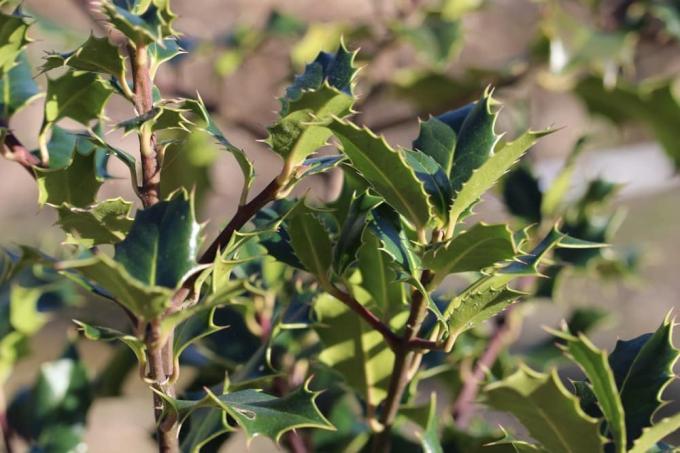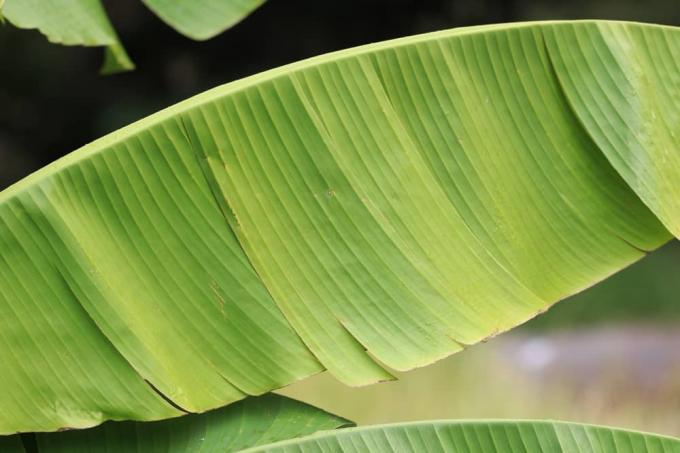

Table of contents
- Chinese dwarf lilac (Syringa meyeri)
- Ginkgo (Ginkgo biloba)
- Photinia x fraseri
- Hydrangea (Hydrogena macrophylla)
- Japanese Spindle (Euonymus japonica)
- Belt flower (Loropetalum chinense)
- Gaultheria procumbens
- Holly (Ilex)
- Winter heather (Erica carnea)
- Lemon Balm (Melissa officinalis)
- Dwarf pine (Pinus mugo var. pumilio)
- care and protection
Hardy potted plants are ideal for the balcony or garden, as they can remain outdoors all year round and do not require sheltered winter quarters. Evergreen plants also have a decorative effect even when the temperature is below zero. But which types of plants are absolutely hardy, even if they are cultivated in tubs?
Absolutely hardy potted plants can be found in a surprisingly large number. Some of the plants are not only hardy, but also evergreen. This allows them to decorate the terrace or garden even in the depths of winter.
Chinese dwarf lilac (Syringa meyeri)
The Chinese dwarf lilac enchants in spring with its abundance of flowers and is extremely robust. It can reach a height of up to one and a half meters and is therefore only conditionally suitable for balconies and other spatially restricted areas. The pink and purple flowers are not only a visual adornment, but also an asset to wildlife. Because bees and bumblebees find it a valuable source of food very early in the year.
Ginkgo (Ginkgo biloba)

Easy to care for and undemanding, the ginkgo is extremely resilient and robust. Unfortunately, it is still quite unknown that it can be kept in a bucket. The plant also thrives in smaller pots without any problems. In autumn, the ginkgo shows a slightly yellowish color of its foliage, which allows it to form a decorative contrast to evergreen plants.
Photinia x fraseri

The photinia and in particular the purple photinia is a highlight - especially from spring to autumn. Because the leaves of the plant continuously change color during these seasons, from bright red to bronze to rich green. The flowers of the evergreen plant are rather inconspicuous, but bright red fruits appear in summer.
Hydrangea (Hydrogena macrophylla)

The hydrangea is particularly known for its unusual flowers, but is also extremely robust and hardy. Therefore, it can easily remain outdoors during the cold season and can even be an eye-catcher. Because if the inflorescences are not cut off in autumn, they are still a beautiful decoration in winter.
Japanese Spindle (Euonymus japonica)
The Japanese spindle shrub is evergreen, but does not flower and therefore does not produce any fruit. Nevertheless, it is a decorative enrichment for the garden or balcony, because the foliage offers an eye-catching play of colors. Robust and easy to care for, the Japanese spindle shrub is also ideal for beginners in plant care.
Belt flower (Loropetalum chinense)
The belt flower is rather unknown, although it is hardy and evergreen and has a particularly decorative flower. The flowering period is between February and March and adorns the plant with pink-red, unusually shaped flowers. Even outside of this time, however, the reddish foliage is an eye-catcher and can provide variety in the green. In addition, the belt flower is comparatively easy to care for, compact and small in stature. This makes the container plant suitable for smaller balconies, among other things.
Gaultheria procumbens

Green to red foliage and bright red berries adorn the checkerberry. Due to its compact growth habit, the plant is also ideal for smaller balconies and corners in the garden. However, it must be noted that the plant is poisonous. To be on the safe side, the cloudberry should therefore be avoided at locations that can be reached by pets and children.
Holly (Ilex)

Holly is better known to many as Ilex and is often found as a hedge plant. However, very few people know that the robust plant can also be cultivated in a bucket. The holly is wonderfully suited as a container plant and can be made particularly decorative with topiary. Another decorative factor are the bright red berries, which contrast beautifully against the often patterned or rich green foliage. The evergreen plant is also an eye-catcher in winter.
Winter heather (Erica carnea)
The winter heather not only has good winter hardiness and with the appropriate protection of the roots can easily withstand lower freezing temperatures. It also blooms during the cold season. From around December to March, the winter heath is adorned with white to pink blossoms, attracting everyone's attention.
Due to its small size, it is wonderful for smaller balconies and niches and can be combined with other plants in a particularly decorative way.
Lemon Balm (Melissa officinalis)

Lemon balm is known as an aromatic kitchen herb as well as a medicinal herb. As an edible decoration on the dessert, as an ingredient in salads, cocktails or as a tea, the fresh lemon balm is a tasty enrichment. What is hardly known, however, are the robust properties and the winter hardiness of the plant. Even shoots of the plant can be harvested on frost-free days. As a result, the evergreen culinary herb can be an enrichment for the menu all year round.
Dwarf pine (Pinus mugo var. pumilio)
The dwarf pine is evergreen and grows comparatively compact. The plant reaches a maximum height of 1.5 meters, can be pruned well and is easy to care for. The robust plant can be cultivated in a bucket without any problems and can therefore stand on the balcony as well as on the terrace.
care and protection
Even if a container plant is absolutely hardy, some protection and care is required to ensure that the plant survives the winter healthy and strong. How the care should be, of course, depends on the respective plant. In general, however, the following points should be observed:
Protection
Insulating the bucket by placing it on Styrofoam and wrapping it with garden fleece ensures that the substrate and the roots cannot freeze completely. Smaller planters can also be placed in a larger bucket, with the space in between filled with Styrofoam or straw. This means that the soil and roots remain receptive for a longer period of time, making it easier to supply water and the plant can be cared for more easily.
Location
Whether the potted plant should be in the shade or in the sun naturally depends on the plant in question. However, a sheltered location can be useful in any case, so that the plant is not damaged by strong winds or prolonged and intensive rainfall.
Water
In winter, the plants should only be watered sparingly and on frost-free days. When watering, it is important for the evergreen plants that the soil does not dry out completely. However, waterlogging must also be avoided as a matter of urgency. Adequate drainage is therefore essential after heavy rainfall and in the open air. If the location is shady, less watering is usually required.
Tip:
If the plant is in the shade, the water supply should be much more economical.
 garden editorial
garden editorial I write about everything that interests me in my garden.
Learn more about potted plants

Abalie, Abelia grandiflora: 14 tips for proper care
The large-flowered abalia (Abelia grandiflora) is an extraordinarily easy-care ornamental shrub that delights with numerous funnel-shaped and subtly scented flowers. It is just as suitable as a background plant as a hedge or container plant.

Caring for the tangerine tree properly | 13 tips for the tangerine tree
Many citrus plants have evolved from the tangerine, one of the oldest and most original citrus species. With its white flowers and orange fruits, it is a feast for the eyes and the palate. In this country it is only cultivated as a container plant due to its sensitivity to frost.

Indian canna, Canna indica | 13 tips for care
Canna indica, also known by the botanical name Canna indica, is a decorative plant that not only enriches every garden during flowering. In pot culture, it can be used as an accent for many years thanks to its color and growth.

Is dwarf bamboo hardy? | 11 tips for care & cutting
Dwarf bamboo is one of the easy-care sweet grasses. In the garden, it can be used as a good ground cover, as it does not grow as tall as its larger relatives. Whether the plant is hardy and how it is cared for and cut can be read in the guide.

Pink dwarf banana, Musa velutina | Care of the Kenya Banana
The pink dwarf banana (Musa velutina) is an eye-catcher in the garden. It grows to a maximum of two meters and impresses with its impressive flowers. The small pink fruits taste sweet and aromatic. If you want to harvest the exotic fruits, you should follow our care tips.

Fig tree, Ficus carica: Care from A-Z | 4 tips for growth
The fig is one of the oldest cultivated plants, as its sugary fruits were used as a sweetener in the past. The fig tree comes from Asia Minor, but can also be cultivated in this country. The advantage is that the fig is easy to care for.
